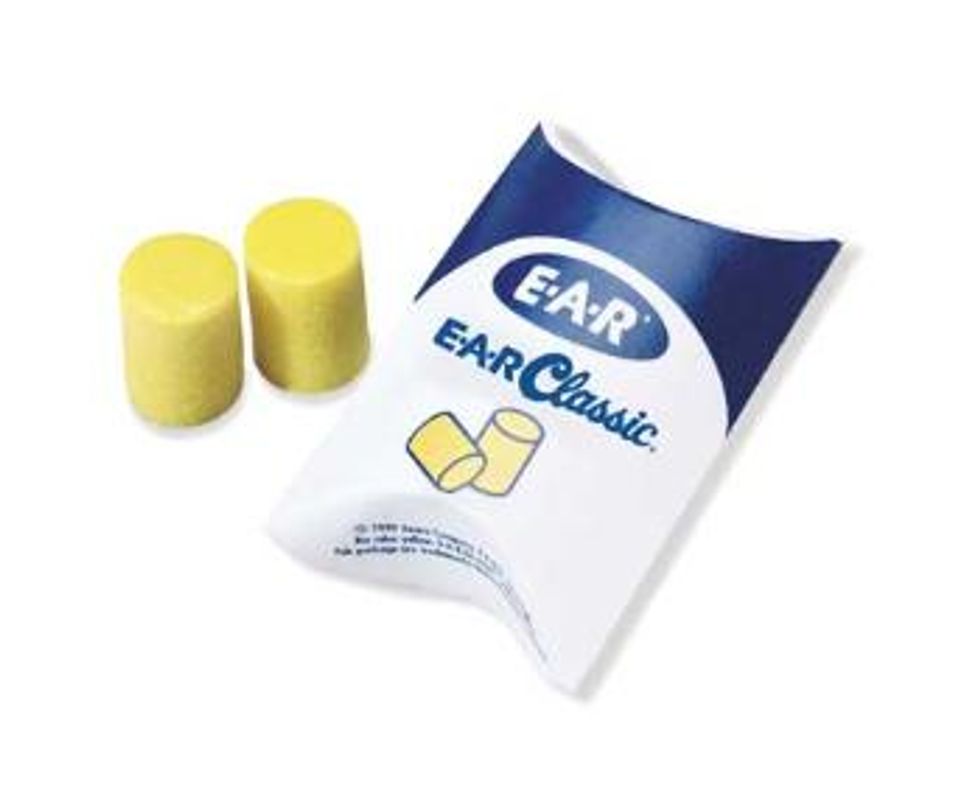A friend of mine, a true iron man of music—
engineer/musician/singer/songwriter/tech—has
a horrific secret: he's Beethoven-deaf. Currently
he works as a guitar tech for one of the most
famous guitarists in the world. I can't reveal
his identity because it could cost him his job if
his boss knew that his tech couldn't hear the
highs coming out of that stellar rig. Here's an
example of his staggering deafness: you know
that scene in the movie Poltergeist where the
little girl gives that prolonged scream after she
encounters the ghost? When my friend recently
watched that scene, he heard nothing; he literally
thought his TV had stopped working. He
got up off the couch and walked up to the TV
to investigate. When dialogue kicked in, he
discerned that the problem was his ears, not his
television. That is cochlear damage.
There are thousands of tiny hairs in the cochlea
that are stimulated by the pressure of sound
waves, like wind moving in a wheat field.
Different frequencies of sound stimulate specific
sections of these tiny auditory hairs, causing
them to move; this discharges electrical
impulses through the auditory nerve, which our
brains interpret as sound.
Here's the bad news: these tiny hair cells and
auditory nerves are easily damaged by either
a sudden loud sound (such as a feedback
spike), or an extended long period of time
exposed to loud sound (like regular gigging).
When these tiny hairs get bent or broken, they
send electrical impulses randomly to the brain
which are interpreted as sound, even though
there might be a complete absence of sound.
That's tinnitus, the ringing in your ears. I've
heard a theory that it is a little bit like phantom
limb syndrome—you know, an old soldier still
reaches down to itch a leg that was blown off
in Da Nang forty years ago. The line to the
receptor still exists, even though the original
receptor is gone (in this case the tiny auditory
hairs). These receptor lines are active and will
interpret any stimulus as sound. For example,
you squint your eyes just right, the damaged
receptor in your cochlea is stimulated, and you
suddenly hear a high B-flat note ringing loud
and clear. Cochlear damage is almost like a
faulty electrical connection.
A live stage punishes your ears, making
cochlear damage an occupational hazard.
The hell of it is that often it's not even your
amp that's robbing you of your precious
hearing. It's your drummer's bashing and the
occasional brain spike of painful feedback.
Even the warm lows of the bass that don't
feel painful are still laying waste to part of
your cochlea. Unless you're on a tour with
a killer in-ear monitor system and a quiet
stage, protecting your ears comes down to
wearing earplugs. Playing guitar and wearing
earplugs is the sonic equivalent of suiting
up with a couple condoms. Sure you lose
sensation, sure it feels unnatural,
sure it's not as fun—but
much like our Trojan friends,
these foam protectors should
be kept with you at all times.
Because earplugs color your tone by stealing
highs, you have to set your rig plug-free, really
playing with all of your settings: clean, dirty,
etc. Stand back as far as your cord will let you,
giving your ears the highs of the tonal spectrum
that your audience hears. Once your tone
is dialed, don't touch it, trusting that your rig
sounds like God Himself rocking.
The other day during sound check for the
Nashville Star Live tour, I set my rig sans plugs
on a big, open arena stage where you can
move some air. I cranked my ValveTrain amp up
to six and it really came alive—the kind of good
tone that almost makes you drunk. I cranked it
up to eight and I began hearing cool overtones
that aren't normally there. I was beginning to
feel a little giddy. I cranked it wide open and it
became sublime. Inspired, our drummer came
on stage and began pounding away, then our
bass player followed, and it turned into a Spinal
Tap jazz odyssey. I had more fun during the
trance-inducing ten minute jam than I had had
for the entire tour. We blew through sound
check with the singers and kept on jamming
until the stage manager ran us off so they could
open doors to let in the crowd. As I flipped my
amp to standby, a buzz in my left ear swelled
into a clear F# and I wondered if I would ever
hear that tone naturally in a mix again.
John Bohlinger
John Bohlinger is a Nashville guitar slinger who has
recorded and toured with over 30 major label artists. His
songs and playing can be heard in several major motion
pictures, major label releases and literally hundreds of
television drops. For more info visit johnbohlinger.com









![Rig Rundown: Russian Circles’ Mike Sullivan [2025]](https://www.premierguitar.com/media-library/youtube.jpg?id=62303631&width=1245&height=700&quality=70&coordinates=0%2C0%2C0%2C0)








